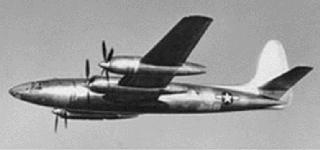




Republic Aviation’s F-12 was born out of the same competition as the Hughes XF-11 in response to the pressing need for speed, ceiling and range in a photo-reconnaissance aircraft. The first flight of the XF-12 was made on Feb. 4, 1946, which demonstrated the capability of operating at 45,000 feet at a speed of 470 mph over a range of 4,500 miles.
When the XF-12 was modified with increased "all weather" equipment and outfitted with a new power plant capable of providing short bursts of extreme power, it suddenly assumed tremendous importance in the eyes of both the U.S. Air Force and the State Department. As a potent intelligence weapon, the XF-12 had the ability to obtain photographs both in daylight and under conditions of restricted visibility and at high altitudes over long ranges and with great speed. Operating from northern bases (Alaska and Canada), this "flying photo laboratory" was capable of mapping broad stretches of territory in the Arctic regions performing reconnaissance with near-invulnerability.
Low-drag was a primary consideration throughout the design of the XF-12. Many of its features were taken directly from Republic’s considerable experience with fighter plane design. In a extremely rare case of design direction absolutely no compromise with aerodynamics was made in the shape of its fuselage. The long, pointed nose of the design virtually prohibited flow separation.
The XF-12 carried a variety of photographic equipment, including complete dark room facilities to permit the development and printing of films in flight. It contained three separate photographic compartments and a large hold in the belly accommodated 18 high-intensity photo-flash bulbs to permit night photography.
The mission called "Operation Bird's-eye" was conceived to demonstrate the newly-designated XR-12’s ultimate photo capabilities. On Sept. 1, 1948, the second XR-12 lifted off from Air Force Flight Test Center at Muroc, Calif., and climbed westward to gain altitude over the Pacific Ocean. Upon reaching its 40,000 foot cruising altitude, the XR-12 headed eastward and began photographing its entire route of flight over the entire United States. The crew shot a continuous 325 foot long strip of film composed of 390 individual photos covering a 490-mile-wide field of vision. The aircraft landed at Mitchel field at Garden City, Long Island, N.Y., completing a flight lasting six hours and 55 minutes.The record shattering flight was featured in the Nov. 29, 1948, issue of Life magazine and the actual filmstrip went on exhibit at the 1948 Air Force Association Convention in New York City.
At the time this record was made, the Air Force had already canceled the entire XF-12 program. The primary reason for its demise was the availability of both B-29 and B-50 types to meet the long-range photo-reconnaissance requirement until the far more capable RB-47 was brought into service. Had the Rainbow been available in 1944, it almost inevitably would have been ordered in quantity, and the whole postwar structure of aircraft markets might have been altered, with Republic building follow-on airliners. As it was, the Rainbow disappeared into oblivion, despite its graceful lines and high performance.

